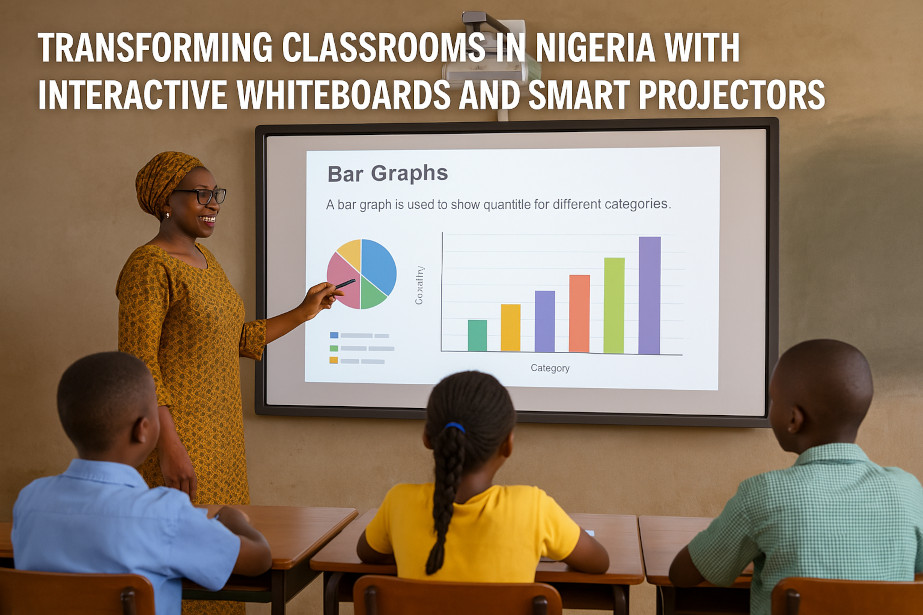As the world continues to embrace digital learning, Nigerian schools are beginning to explore innovative tools that enhance teaching and learning. Among these tools, interactive whiteboards and smart projectors stand out as powerful assets with the potential to revolutionize classroom experiences across the country.
Transforming Classrooms in Nigeria with Interactive Whiteboards and Smart Projectors


What Are Interactive Whiteboards and Smart Projectors?
Interactive whiteboards are large touch-sensitive displays that allow both teachers and students to interact with content directly on the screen. When paired with smart projectors — devices that project digital content with interactive features — they transform traditional lessons into dynamic, multimedia-rich experiences.
Why These Tools Matter in Nigerian Classrooms
1. Boosting Student Engagement
Interactive whiteboards turn passive learning into active participation. Students can solve problems, draw, write, and even lead discussions right from the board — making learning more exciting and memorable.
2. Empowering Teachers
With access to videos, simulations, and real-time digital tools, teachers can deliver lessons more effectively. These tools reduce the reliance on chalkboards and enable educators to integrate technology into their teaching styles.
3. Fostering Collaboration
Whether it’s a science experiment or a group discussion, interactive displays support collaborative learning. Students can brainstorm, present findings, and work together on shared tasks, building communication and teamwork skills.
4. Supporting Diverse Learning Needs
With a mix of visuals, audio, and tactile interaction, these tools cater to different learning styles — helping students with special needs or varying abilities stay engaged and motivated.
Challenges to Consider
Despite the benefits, there are challenges that must be addressed for effective implementation:
-
Power Supply Issues: Many schools still struggle with reliable electricity.
-
Cost and Accessibility: The upfront cost of devices and installation may be a barrier, especially in rural areas.
-
Teacher Training: Successful integration depends on equipping educators with the skills to use these tools effectively.
-
Maintenance: Regular updates and technical support are essential to keep devices functional.
A Vision for the Future
To fully unlock the potential of interactive classroom tools, stakeholders in education must:
-
Invest in teacher training and capacity development.
-
Encourage government and private sector partnerships to support adoption.
-
Create localized digital content aligned with the Nigerian curriculum.
-
Ensure equitable access to technology in both urban and rural schools.
Conclusion
Interactive whiteboards and smart projectors are not just luxury tools — they are essential assets in building future-ready classrooms. For Nigeria to keep pace with global educational standards, integrating such technology is not only beneficial but necessary. With the right support and strategic implementation, these tools can transform teaching and learning across Nigerian schools, ensuring every child has access to a more engaging and effective education.

